We may earn money or products from the companies mentioned in this post.
Best Gym and Workout Shoes for Women: Top picks for comfort, support, and performance in 2025
Finding the right gym shoes can make or break your workout routine. The wrong pair can lead to discomfort, poor performance, and even injury during your fitness activities.
The best gym shoes for women strike a balance between proper support, cushioning, and stability, tailored to meet your specific workout needs. Whether you’re lifting weights, taking a dance class, or running on the treadmill, different activities require different shoe features.
This blog article covers everything from top-rated training shoes to specialized footwear for different exercise types. You’ll learn about key features to consider, how to choose the right fit, and tips for keeping your shoes in great condition.
Best Overall Gym Shoes for Women
Nike Metcon 9 takes the top spot for women’s gym shoes. This shoe works well for most gym activities.
The Metcon 9 has a firm, stable base that supports your feet during lifting. The heel stays steady when you perform squats or deadlifts.
Key features:
- Durable rubber outsole
- Firm midsole for stability
- Breathable upper material
- Good grip on gym floors
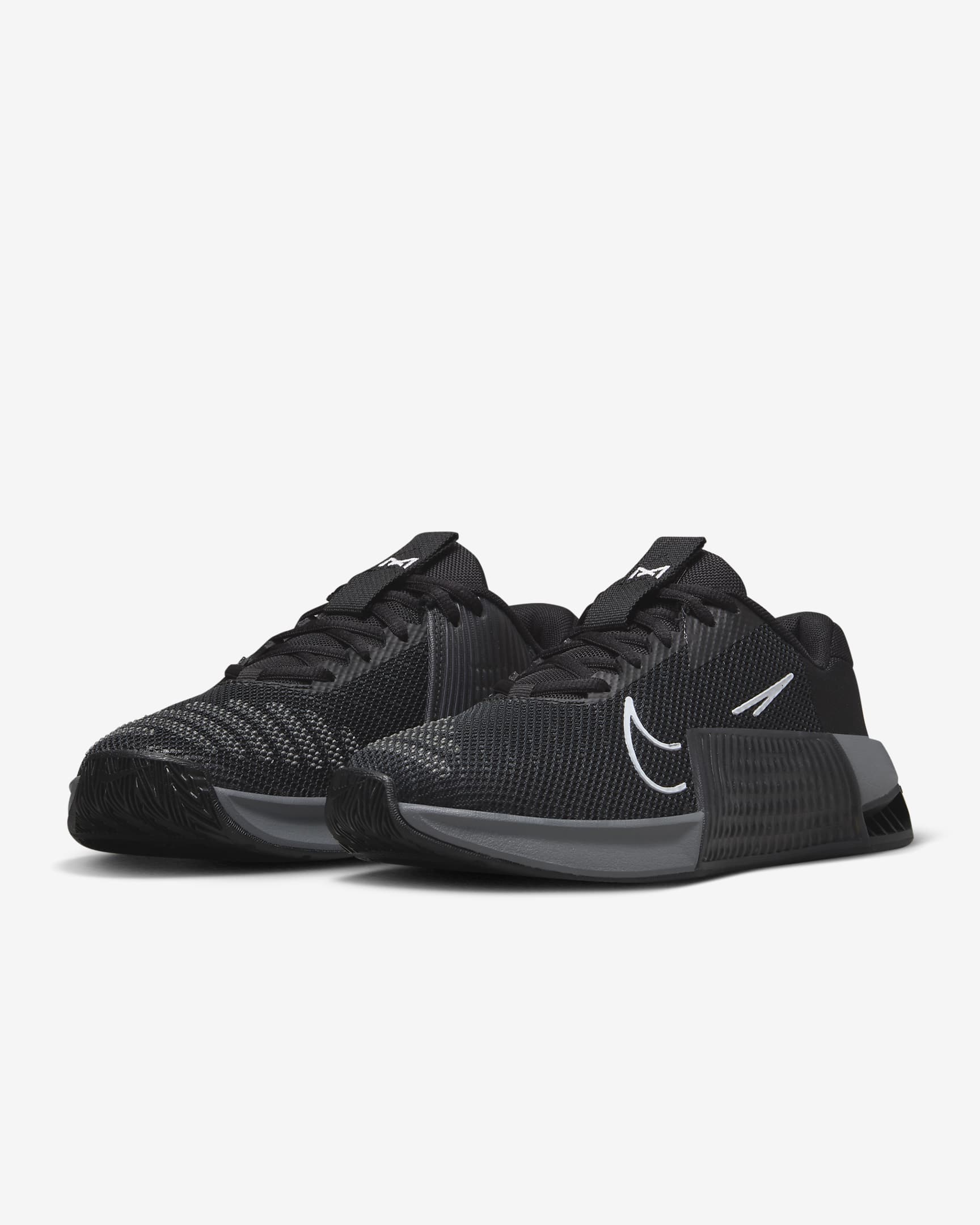
Shop: Nike Metcon 9
Adidas Ultraboost 1.0 comes in second place. This shoe offers more cushioning than the Metcon 9.
The Ultraboost works well if you do cardio and light weight training. The soft foam provides a comfortable feel during longer workouts.
You can wear either shoe for different gym activities. The Metcon 9 works better for heavy lifting. The Ultraboost feels better for cardio-focused workouts.
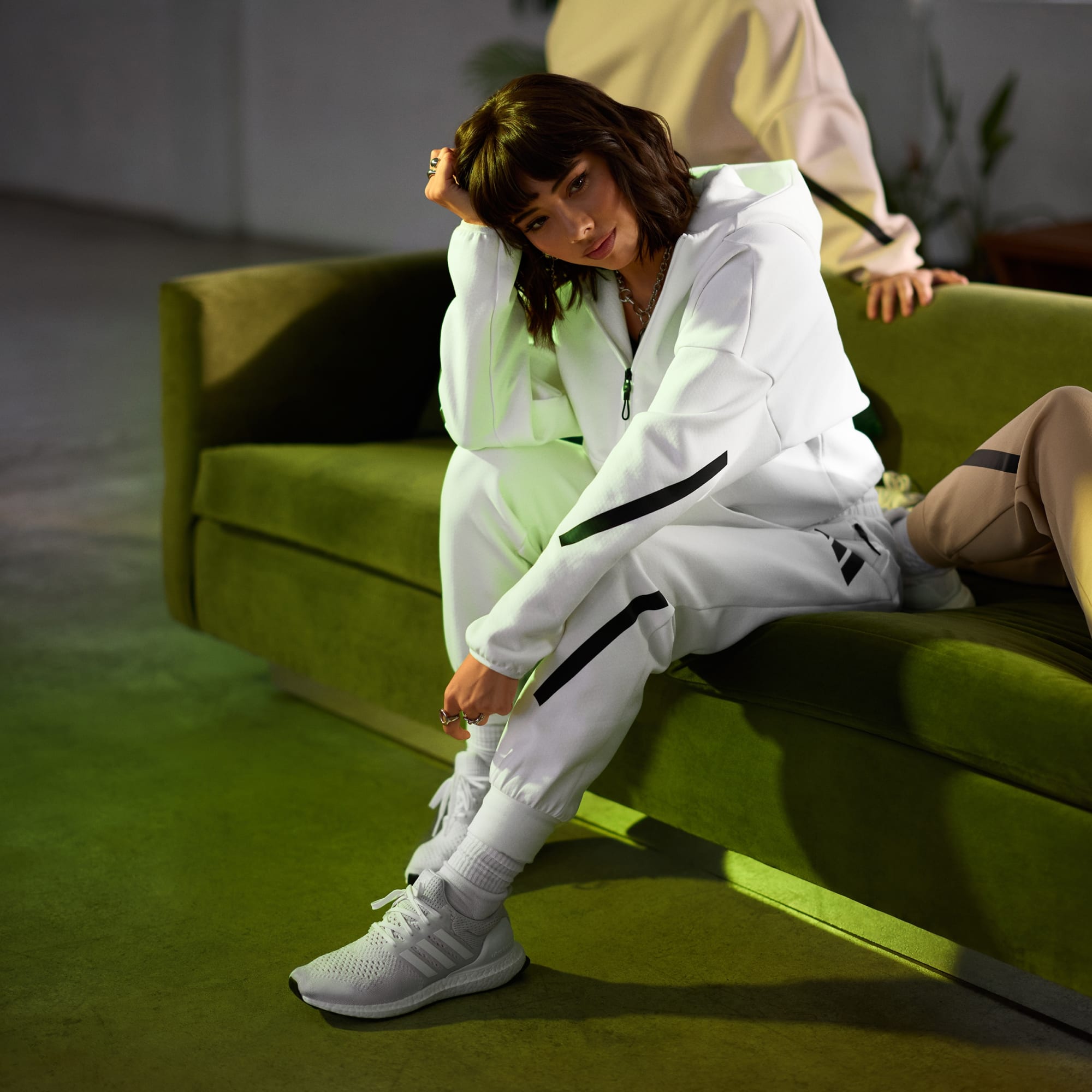
Shop: Adidas Ultraboost 1.0
Best Shoes for Cross-Training
Cross-training shoes need to handle many different movements. You jump, lift, run, and change directions quickly.
Nike Metcon 9 also wins this category. The shoe’s design handles side-to-side movements well.
The rubber outsole grips the floor during lateral movements. The firm base keeps your foot stable during quick direction changes.
Adidas Ultraboost 1.0 works as a second choice for cross-training. It has more cushioning but less lateral support than the Metcon 9.
What to look for:
- Firm heel support
- Good grip on the outsole
- Durable materials
- Comfortable fit
Best Shoes for Weightlifting
Weightlifting shoes need a stable, flat base. Your feet should not move inside the shoe during heavy lifts.
Flat-soled shoes are ideal for deadlifts and most other lifts. They keep your feet close to the ground.
Nike Metcon 9 performs well for weightlifting. The firm base does not compress under heavy weight.
Converse Chuck Taylor All Stars are a budget option. Many lifters use these simple canvas shoes. They have thin, flat soles.
Specialized weightlifting shoes have raised heels. These help with ankle mobility during squats. They cost more but help with proper form.
Features for weightlifting shoes:
- Firm, non-compressible sole
- Tight, secure fit
- Minimal cushioning
- Good grip on gym floors
These are my current weight-lifting shoes, and I love them!
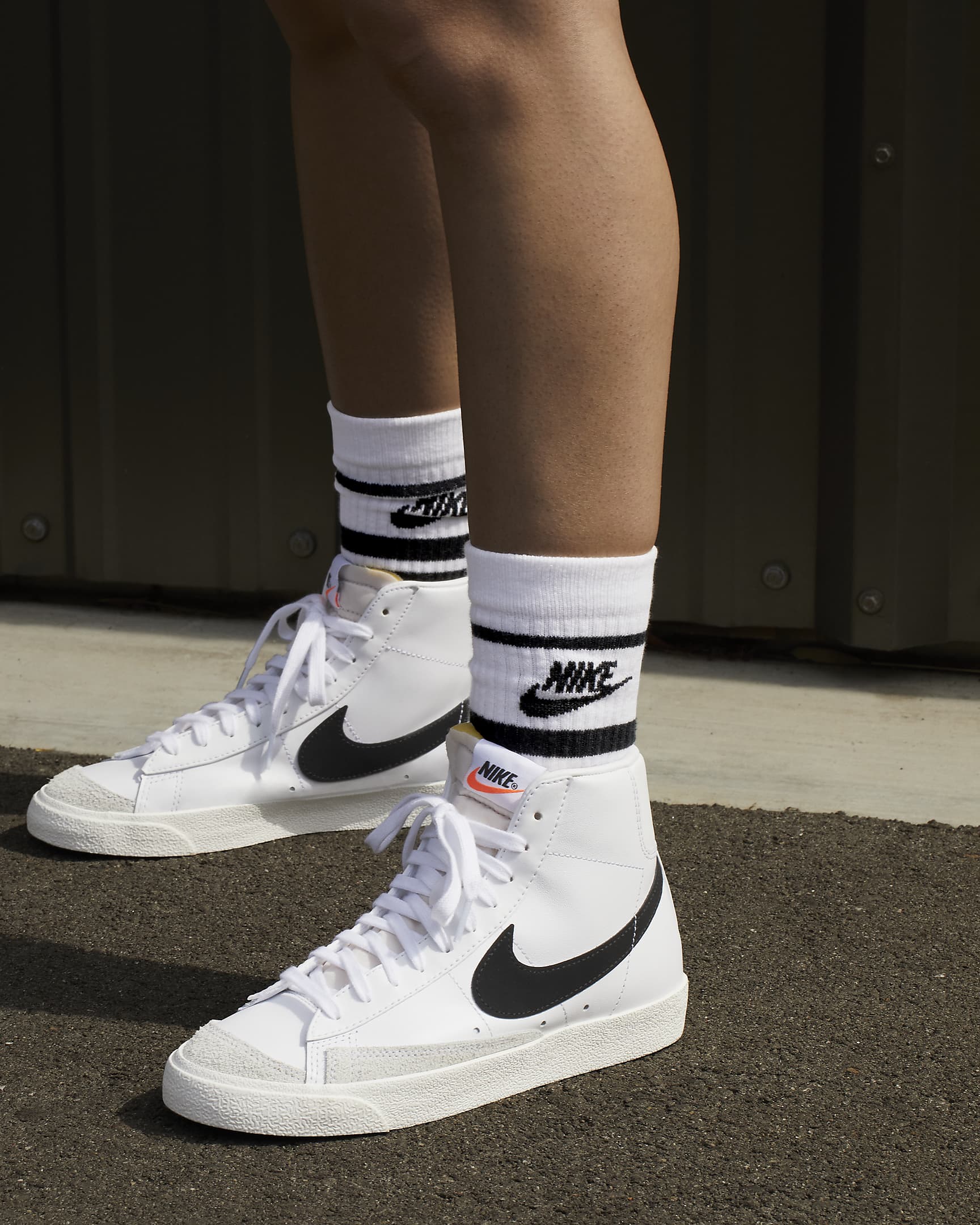
Shop: Nike Blazer Mid ’77
Best Shoes for Cardio and Running
Running shoes need different features from general gym shoes. Treadmill running requires more cushioning for impact absorption, while outdoor running needs durability and weather protection.
Best Treadmill Running Shoes for Women
Treadmill running creates repetitive impact on the same foot areas. You need shoes with maximum cushioning in the heel and forefoot.
Nike Air Zoom Pegasus offers excellent heel cushioning and responsive foam. The mesh upper keeps your feet cool during long indoor sessions.
Brooks Ghost provides balanced cushioning throughout the entire foot. This shoe works well for runners who land on their heels or midfoot.
ASICS Gel-Nimbus features gel cushioning in both the heel and forefoot areas. The soft midsole absorbs impact well on hard treadmill surfaces.
Look for these key features:
- Heel cushioning for impact absorption
- Breathable mesh to prevent overheating
- Flexible forefoot for natural toe-off
- Neutral support unless you overpronate
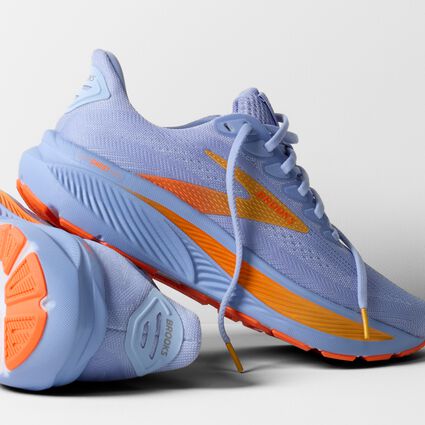
Shop: Brooks Ghost 17
Best Outdoor Running Shoes for Women
Outdoor running requires shoes that can handle various surfaces and weather conditions. You need more durability and traction than indoor options.
Brooks Adrenaline GTS combines cushioning with stability features. The rubber outsole provides good grip on pavement and light trails.
New Balance Fresh Foam offers plush cushioning with a durable rubber outsole. This shoe handles both concrete and park paths effectively.
Hoka Clifton provides maximum cushioning with a lightweight design. The wide base offers stability on uneven surfaces.
Essential outdoor features include:
- Durable rubber outsole for traction
- Water-resistant materials for wet conditions
- Reinforced toe box for protection
- Reflective details for visibility
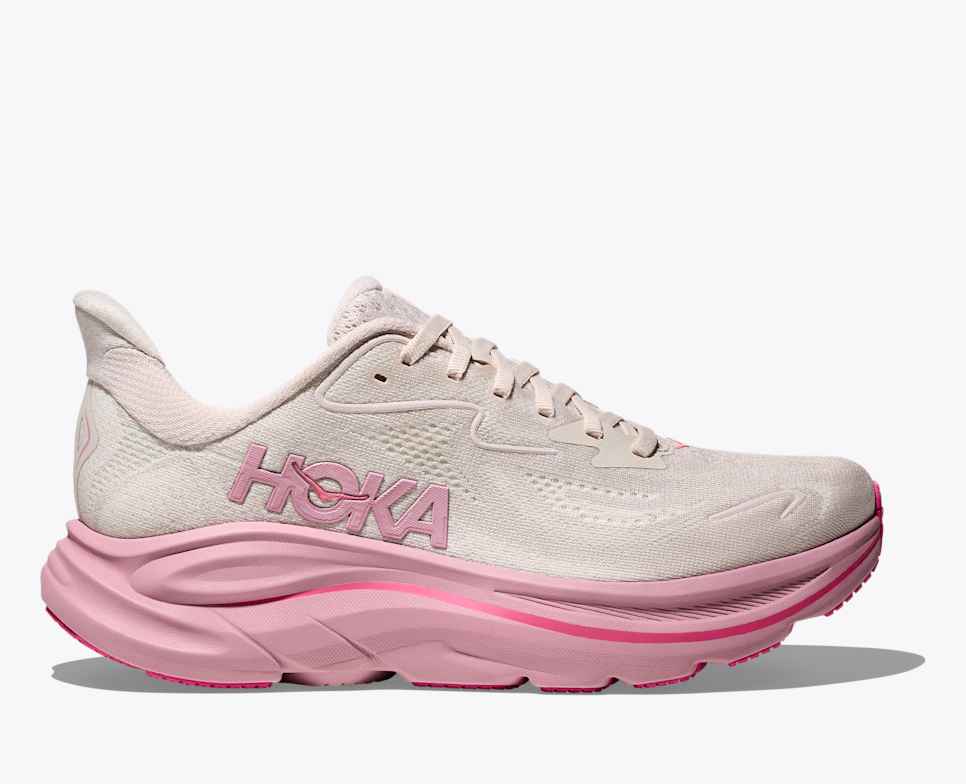
Shop: Hoka Clifton 10
Best Shoes for Walking Workouts
Walking shoes need different support than running shoes. You roll through each step differently, requiring flexibility in specific areas.
ASICS Gel-Venture offers good arch support and heel cushioning. The walking-specific design promotes natural foot movement.
New Balance 928 provides motion control for overpronators. The sturdy construction supports longer walking sessions.
Skechers Go Walk features lightweight construction with flexible soles. The slip-on design works well for casual walking workouts.
Key walking shoe features:
- Flexible forefoot for toe-off motion
- Firm heel counter for stability
- Arch support for longer sessions
- Lightweight design to reduce fatigue
Shop: New Balance 928
Best Shoes for Studio and Group Fitness Classes
Studio and group fitness classes need shoes that can handle quick direction changes and provide grip on smooth floors. Dance fitness requires flexible soles that let you pivot easily, while kickboxing classes need extra ankle support for kicks and jumps.
Best Shoes for Dance Fitness
Dance fitness classes like Turn Up Fitness and barre require shoes with specific features. You need a shoe that lets you turn and pivot smoothly without sticking to the floor.
Pivot points on the soles are key for dance shoes. These small circles or patches of different materials help you spin without hurting your knees. Look for shoes with suede or leather pivot points under the ball of your foot.
Lightweight construction keeps your feet from getting tired during long classes. Heavy shoes make it harder to lift your legs and move quickly. Choose shoes that weigh less than 10 ounces per shoe.
Flexible soles let your feet bend naturally during dance moves. Stiff soles make it hard to point your toes or flex your feet. Test the shoe by bending it with your hands – it should fold easily at the ball of the foot.
Split-sole designs work well for dance fitness. These shoes have separate sole sections for the heel and forefoot. This design gives you a better floor feel and makes it easier to move on your toes.
Shop: Ryka Devotion XT Training Shoe
Key Features to Look for in Women’s Gym Shoes
The right gym shoes need proper cushioning for comfort during long workouts, stable support for lateral movements, breathable materials to keep feet dry, and durable construction that grips various surfaces. These four features work together to protect your feet and improve your performance.
Cushioning and Comfort
Midsole foam is the most important part of shoe cushioning. Look for EVA foam or newer materials like React or Boost foam. These materials absorb impact when you jump or run.
The heel-to-toe drop affects comfort, too. A 4-8mm drop works well for most gym activities. Higher drops put more pressure on your toes during lifting.
Arch support should match your foot type. High arches need more cushioning underneath. Flat feet need firmer support to prevent overpronation.
Your shoes should feel comfortable right away. Don’t expect them to “break in” over time. Try them on in the afternoon when your feet are slightly swollen from daily activity.
Toe box width matters for comfort. Your toes should have room to move without sliding around. Too tight causes blisters and hot spots.
Stability and Support
Lateral support keeps your foot stable during side-to-side movements. Look for reinforced sidewalls and a wider base. This prevents ankle rolls during HIIT or dance classes.
The heel counter should be firm but not rigid. It holds your heel in place without restricting natural movement. A good heel counter prevents blisters and hot spots.
Ankle support varies by shoe height. Low-top shoes give more freedom of movement. Mid-top shoes offer more stability for people with weak ankles.
Sole flexibility should match your workout type. Cross-training shoes need moderate flex. Running shoes need more heel-to-toe flexibility.
The lacing system affects how well the shoe stays on your foot. Multiple eyelets let you adjust the fit in different areas. Some shoes have straps for extra security.
Breathability and Materials
Mesh uppers allow air to flow through the shoe. Look for engineered mesh with different hole sizes. Smaller holes in high-wear areas prevent tearing.
Moisture-wicking linings pull sweat away from your skin. Synthetic materials work better than cotton. Some shoes have antimicrobial treatments to reduce odor.
Synthetic leather in high-wear areas adds durability. It should be perforated to allow airflow. Too much synthetic material makes shoes hot and uncomfortable.
Seamless construction reduces friction and hot spots. Heat-welded overlays work better than stitched seams. This is especially important for long cardio sessions.
Removable insoles let you replace them with custom orthotics. They also make shoes easier to clean and dry between workouts.
Durability and Traction
Outsole rubber should match your workout surface. Harder rubber lasts longer on concrete. Softer rubber grips better on smooth gym floors.
Tread patterns affect traction and durability. Deeper lugs work well for outdoor activities. Flat patterns with small grooves suit indoor workouts better.
Wear indicators show when to replace your shoes. Look for different colored rubber that appears when the tread wears down. Replace shoes when these indicators show.
Reinforced high-wear areas extend shoe life. The toe and heel areas get the most stress. Extra rubber or synthetic overlays prevent premature wear.
Outsole flexibility affects how the shoe moves with your foot. Too stiff causes premature cracking. Too flexible wear out faster during lateral movements.
How to Choose the Right Gym Shoe for Your Workout
Different exercises require different types of support and cushioning. Your foot shape and how you walk affect which shoes will work best for you.
Matching Shoes to Workout Type
Running shoes work best for treadmill workouts and cardio classes. They have thick heel cushioning and a curved sole that helps your foot roll forward.
Cross-training shoes are ideal for gym classes, circuit training, and mixed workouts. They offer more side-to-side support than running shoes. The sole is flatter and more stable.
Weightlifting shoes have a firm, flat sole that keeps you steady during heavy lifts. Some have a small heel raise that helps with squat depth. Regular sneakers can work for lightweights.
HIIT shoes need excellent grip and quick direction changes. Look for shoes with good traction and reinforced sides. Cross-trainers often work well for these workouts.
Walking shoes have flexible soles and good arch support. They’re lighter than running shoes but still provide cushioning for your heel.
Importance of Correct Fit
Your feet swell during the day, so shop for shoes in the afternoon or evening. This gives you the most accurate fit for when you’ll work out.
Leave about a thumb’s width of space between your longest toe and the shoe front. Your toes should wiggle freely without feeling cramped.
Both feet are often different sizes. Always try on both shoes and buy for your larger foot.
Width matters just as much as length. Shoes that are too narrow cause blisters and pain. Too wide means your foot slides around inside.
Walk around the store in the shoes for at least 5 minutes. Pay attention to any pressure points or uncomfortable spots.
Understanding Foot Type and Pronation
Pronation is how your foot rolls when it hits the ground. Normal pronation means your foot rolls slightly inward. This is healthy and natural.
Overpronation happens when your foot rolls too far inward. You might need motion control shoes with extra arch support and firmer midsoles.
Underpronation (supination) means your foot doesn’t roll inward enough. You need shoes with extra cushioning and flexibility.
Check your foot type by looking at wet footprints. A full footprint suggests flat feet. Only the heel and ball of your foot mean high arches.
Flat feet often need more arch support and stability features. High arches typically need extra cushioning and flexibility to absorb impact.
Care and Maintenance Tips for Gym Shoes
Taking care of your gym shoes will help them last longer and stay fresh. Regular cleaning and knowing when to replace them keeps your feet healthy and your shoes working well.
Cleaning and Storage
Clean your gym shoes after every few workouts to prevent bacteria and odor buildup. Remove the insoles and laces before washing.
Hand Washing Method:
- Mix warm water with mild detergent
- Scrub with a soft brush or cloth
- Focus on dirty spots and the sole
- Rinse with clean water
Machine Washing:
- Use cold water on a gentle cycle
- Add towels to prevent banging
- Use mild detergent only
- Remove laces and insoles first
Never put gym shoes in the dryer. The heat can damage the materials and change their shape. Air-dry them at room temperature instead.
Store your shoes in a well-ventilated area. Avoid keeping them in your gym bag for long periods. This traps moisture and creates bacteria.
Storage Tips:
- Let the shoes dry completely before storing
- Use shoe trees to maintain shape
- Keep in a cool, dry place
- Alternate between pairs if you have multiple shoes
When to Replace Your Workout Shoes
Replace your gym shoes every 300-500 miles or 6-8 months of regular use. The exact time depends on how often you work out and your activity type.
Signs You Need New Shoes:
- Worn tread on the bottom
- Uneven wear patterns
- Compressed midsole that won’t bounce back
- The heel counter feels loose
- Upper material has tears or holes
Check the sole regularly for wear. If you can see different colors or the tread is smooth, it’s time to replace them.
Your feet or legs feeling more tired after workouts can signal worn-out shoes. Old shoes lose their cushioning and support over time.
High-impact activities like running wear out shoes faster than weight lifting. Track your workouts to know when replacement time is coming.
Style and Design Trends in Women’s Workout Footwear
Women’s workout shoes have moved beyond basic athletic looks. Today’s designs blend performance with style to create shoes you can wear from the gym to the street.
Neutral colorways dominate the market right now. Black, white, and gray remain popular choices because they match most workout clothes.
Bold accent colors are trending on shoe details. You’ll see bright pops of color on:
- Heel tabs
- Laces
- Sole edges
- Brand logos
Knit uppers have become standard in modern workout shoes. This material offers breathability while creating a sleek, sock-like appearance.
Minimalist designs are gaining popularity. Clean lines and simple shapes appeal to women who want versatile shoes for multiple activities.
Sustainable materials are showing up in more workout shoes. Brands now use recycled plastics and eco-friendly fabrics in their designs.
Chunky sole designs have made a comeback. These thicker midsoles provide extra cushioning while adding a trendy, retro look to your workout gear.
Slip-on styles are becoming more common for gym shoes. These laceless designs offer convenience for quick gym sessions or studio classes.
Metallic accents add subtle shine to workout footwear. Silver and gold details appear on eyelets, heel counters, and brand elements.
Textured surfaces create visual interest on shoe uppers. Mesh panels, raised patterns, and mixed materials give shoes a modern, technical appearance.
10+ Popular Summer Fashion Trends for 2025: What’s In and What’s Out for Your Wardrobe Essentials

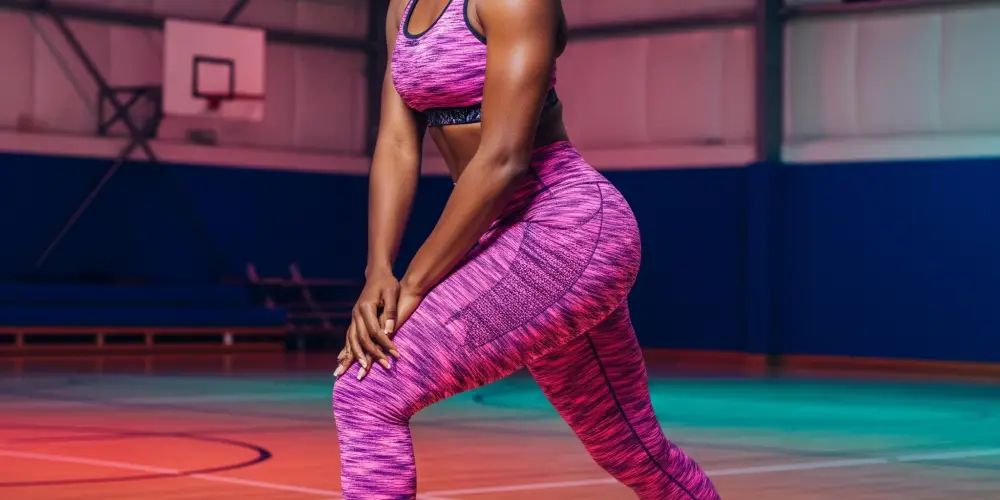





Leave a Reply